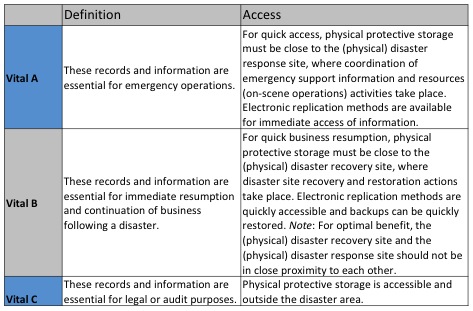Superstorm Sandy took no prisoners. Fight back
with an emergency management plan that protects all your business assets.
When Superstorm
Sandy hit the Northeastern United States, more than 7.5 million businesses
and households in 15 states and the District of Columbia were left without
power, according to numbers compiled by CNN from local power providers.
Flooding all along the Eastern seaboard also caused billions of dollars in
damage to hundreds of thousands of businesses, shutting many of them down.
How
many of these businesses were prepared for such a disaster and will be able to survive
is yet to be known, but chances are that a tremendous number will ultimately
close their doors. Without developing an emergency management plan, many
companies struggle to get through the immediate emergency, resume
business and maintain their competitive position and financial stability.
Being
prepared for an emergency includes protecting the organization's most critical
assets. While safeguarding employees, facilities and equipment are at the top
of the list for most organizations, they may not think about how important it
is to protect their vital records, which are critical to their ability to
resume operations. Without access to vital records and information,
organizations will have difficulty serving customers, securing new business or
keeping up with the day-to-day activities needed to function in the face of a
disaster.
 |
Figure 1: Vital Records (Class 1) Priorities for Access |
There
are three classes of vital records organizations need to act immediately to
protect:
Records needed for
emergency operations,
such as business continuity plans, emergency management communication lists and
personnel contact lists.
Records needed for
resumption and continuation of business, such as current customer or client files,
in-progress accounts payable and accounts receivable and current contracts and
agreements.
Records needed for
legal or audit purposes,
such as accounts payable and accounts receivable files, existing contracts and
agreements, and unaudited financial records.
Surviving a disaster goes
well beyond protecting vital records, though. To ensure that your organization is
prepared for, can respond to and will recover from a disaster, act now to
develop a comprehensive emergency management plan. Because personnel and
monetary resources will be needed, top managers and employees must support the
concept.
After
assembling a team consisting of representatives of various organizational
functions, including emergency management director, procurement officer,
financial manager, safety officer, information technology manager or CIO,
records manager, facility manager, operations manager and human resources
manager, the next initial step is to prepare a proposal for top-level
management following these steps:
- Perform
a cost-benefit analysis to determine costs and benefits of an emergency management
plan. - Conduct
a business impact assessment, analyzing all business functions and the effect a
disaster may have on them.
Comprehensive
emergency management planning yields many benefits for the organization's
records, information and assets if a disaster occurs. Stakeholders can gain
comfort by knowing that measures have been taken to protect the organization
from loss. Emergency management planning benefits that should be promoted in a
proposal include:
Quick
resumption of operations:
When personnel establish a plan, train others, complete preparedness activities
and test the plan, they are ahead of the game and ready to handle an emergency.
Even more important, if an emergency occurs, personnel have a good chance of
controlling it. Quick resumption of operations leads to continued profitability
or revenue flow and adds value to an organization and the products and services
it delivers.
Improved
safety: The courts
could hold an organization negligent for not having a plan if an event causes
an injury or takes an employee's life. The US Occupational Safety and Health
Administration requires all employers to develop and implement an emergency
action plan that includes protection procedures for personnel during and after
an emergency. Materials and supplies can be replaced; personnel are not
recoverable. The emergency management plan should address key activities, such
as training and risk mitigation, that will help keep people safe.
Protection of
vital assets:
As discussed above, emergency management planning includes plans for protecting
the organization's vital assets. The plan protects shareholders' investments,
secures employees' jobs and retirement benefits, safeguards research, protects
personal information and maintains customer confidence and trust. When the
benefits of immediate resumption of operations and protection of personnel are
understood, the benefits of protecting material assets will be recognized as
well.
Reduced
insurance costs.
An emergency management plan is a close partner of business and security. The
plan should contain specific information about assets and risks, low-cost
preventative measures and the cost of each protection program, such as a
computer hot site, off-site records storage or back-up hardware. Additionally,
the plan should contain schedules for periodic facility inspections and
personnel training.
Improved
security: The
process of preparing an emergency management or business continuity plan
includes a review of present security procedures to protect facilities,
personnel, records and information from theft or acts of vandalism or
terrorism. The plan should include detailed procedures to monitor and control
access to the facilities that contain vital records and information. Security
is an important part of the mitigation phase of emergency management.
Compliance with
laws: Leaders of
organizations have the responsibility of taking reasonable measure to protect
the organization's assets, records and information. Court cases set the legal
precedent that organizations must have an established emergency management
plan. In addition, a plan may be required by law, regulation or
contract/agreement.
Reduction of
errors from shock factor: Without
a plan, people will react haphazardly to an emergency by making mistakes or not
reacting at all, leading to greater damage. Emergency response planning
exercises or mock drills place people in "what if" situations that increase
awareness of how to behave in real events. People that know what is expected of
them in emergency situations will be less fearful and behave more effectively.
MARILYN BIER is the executive director for ARMA International, a
not-for-profit professional association and the authority on managing
records and information, and oversees the development and implementation
of all headquarter projects. For the full guide, "Emergency
Management for Records & Information Programs," visit
www.arma.org.








